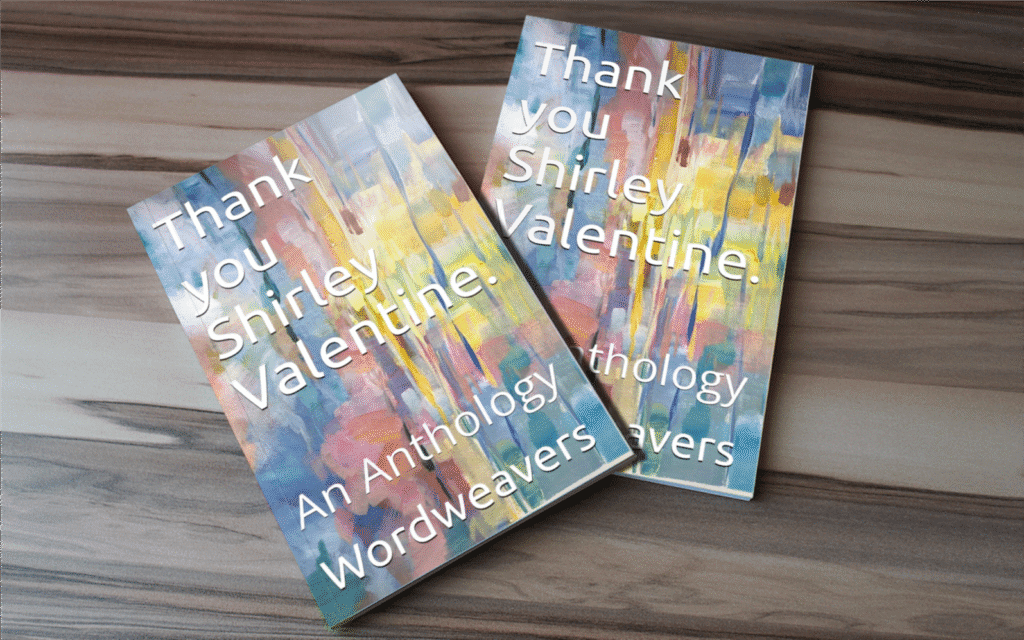How Daniela Inherited a Mansion and Accidentally Became Best Friends with a Jazz Age Ghost Who Really Needs to Work on Her Interior Decorating Skills
When I inherited Great Aunt Millicent’s Victorian mansion, I thought my biggest problem would be the astronomical heating bills and maybe some creaky floorboards. I definitely didn’t expect to become the reluctant caretaker of what I can only describe as the world’s most passive-aggressive haunted room.
The house came with a warning, delivered by Millicent’s ancient lawyer, Mr. Grimsby, who looked like he’d been personally acquainted with the Grim Reaper for several decades.
“Whatever you do,” he wheezed, adjusting his wire-rimmed spectacles, “never enter the red room on the third floor. Your great aunt was very specific about this.”
“What’s in the red room?” I asked.
Mr. Grimsby’s rheumy eyes went wide. “Nothing good,” he muttered. “Nothing good at all.”
Naturally, the red room became my obsession. Have you ever tried NOT thinking about something? It’s impossible. The more I tried to ignore it, the more that locked red door at the end of the third-floor hallway seemed to mock me. I could practically hear it whispering, “Bet you’re curious about what’s behind me, aren’t you, Danny?”
For three weeks, I resisted. I focused on settling into the house, which was already plenty creepy without adding mysterious forbidden rooms to the mix. The portraits in the hallway had that classic “dead ancestor judging your life choices” vibe. And don’t get me started on the grandfather clock that chimed thirteen times at midnight, because apparently even the furniture in this house had commitment issues.
But it was the red door that really got to me. Every time I walked down that hallway, I could swear I heard something moving around inside. Soft footsteps. The occasional thud. Once, I could have sworn I heard what sounded like someone rearranging furniture, but when I pressed my ear to the door, everything went silent.
The breaking point came on a Tuesday night when I was trying to sleep and heard what sounded like a dinner party coming from the red room. Laughter, clinking glasses, muffled conversation. I crept upstairs in my pyjamas, flashlight in hand like some kind of discount paranormal investigator, and the sounds stopped the moment I reached the third floor.
“Okay,” I said to the door, feeling only slightly ridiculous for talking to it. “I get it. You want attention. But could you keep it down? Some of us have jobs in the morning.”
The door creaked in response, which I chose to interpret as an apology.
Thursday night brought new sounds: what seemed to be a full orchestra practising some very dramatic, very loud classical music. Friday night was tap dancing. By Saturday, I was pretty sure whatever was in there was hosting a karaoke night, complete with someone’s absolutely tragic attempt at Whitney Houston’s “I Will Always Love You.”
That’s when I snapped. I marched upstairs, grabbed the antique key from where Mr. Grimsby had reluctantly left it on the mantelpiece, and decided to end this mystery once and for all.
“Alright!” I shouted at the door. “You want my attention? You’ve got it!”
I jammed the key into the lock, turned it with more force than was probably necessary, and threw the door open with the kind of dramatic flair that would have made my high school theatre teacher proud.
The room was… red. Aggressively, overwhelmingly red. The walls were red. The ceiling was red. The furniture was red. Even the air seemed to have a faint reddish tinge, like being inside a giant tomato. It was like someone had taken the concept of “red room” and decided to interpret it as literally as possible.
But here’s the thing that really caught my attention: sitting in a red velvet armchair in the centre of the room was a ghost. Not a scary, chain-rattling, head-spinning-around ghost. Just a regular-looking middle-aged woman in a 1920s flapper dress, also red, reading what appeared to be a romance novel.
She looked up when I entered, marked her place with a red bookmark, and sighed.
“Well,” she said in a voice like old cigarettes and disappointment, “it’s about time. Do you have any idea how boring it’s been up here? I’ve read every book in this room seventeen times. SEVENTEEN TIMES, Danny.”
“You… know my name?”
“Of course I know your name. I’m Vivian. I’ve been haunting this room since 1924, and let me tell you, your great aunt Millicent was much better company. She used to visit twice a week for tea and gossip. You’ve been here a month and haven’t even introduced yourself. It’s terribly rude.”
I stared at her, trying to process this information. “You’re upset about… social etiquette?”
“I’m upset about being ignored!” Vivian snapped, and suddenly all the red objects in the room rattled ominously. “Do you think it’s easy being dead? Do you think I enjoy spending eternity in a room that looks like the inside of a ketchup bottle? I make an effort to be interesting – the dinner party sounds, the orchestra, the karaoke – and you just ignore me!”
“I thought you were trying to scare me away!”
“Scare you? Darling, I was trying to get you to visit! I was throwing the most elaborate haunted house performances I could manage, and you just kept hiding downstairs like some kind of antisocial hermit!”
This was not how I’d imagined my first ghost encounter going. In movies, ghosts were always moaning about unfinished business or seeking revenge for past wrongs. They weren’t complaining about being socially neglected.
“So,” I said carefully, “you’re not here to drive me insane or possess my soul or anything?”
Vivian laughed, a sound like wind chimes in a hurricane. “Oh honey, no. I’m just lonely. I died in this room in 1924 – terrible incident involving a red velvet cake and a very unstable chandelier – and I’ve been stuck here ever since.”
“So you want…what exactly, from me?”
“Company! Conversation! Someone to complain to about how they don’t make ghost stories like they used to! Do you know how insulting it is when modern people expect you to slam doors and throw furniture around? I’m a sophisticated spirit of the Jazz Age, not some common poltergeist!”
And that’s how I ended up having weekly tea parties with a ghost named Vivian in the red room. Every Thursday at 3 PM, I’d climb the stairs with a pot of Earl Grey and whatever gossip I’d picked up from the neighbours, and Vivian would regale me with stories from the 1920s and her increasingly creative opinions about modern society.
The red room, it turned out, wasn’t cursed or evil – it was just incredibly, aggressively red because Vivian had gotten bored one decade and decided to redecorate using her ghostly powers. She’d been experimenting with different colour schemes when she’d gotten stuck on red and couldn’t figure out how to change it back.
“I tried green once,” she admitted. “But it made me look sickly. Red is much more flattering for my complexion.”
The best part? Once Vivian had someone to talk to regularly, she stopped the midnight concerts and dinner party sound effects. The house became actually peaceful, except for the occasional Thursday afternoon when she’d get excited about some bit of gossip and accidentally make all the red objects in the room levitate.
“Sorry,” she’d say, looking embarrassed as her armchair gently floated back to the floor. “I get carried away.”
Six months later, when people asked me about living in a haunted house, I had to explain that yes, technically it was haunted, but the ghost was more like having a chatty elderly roommate who happened to be dead and had questionable taste in interior design.
“Isn’t it scary?” they’d ask.
“The scariest thing about Vivian,” I’d tell them, “is her opinion on modern fashion. She has very strong feelings about yoga pants.”
The red room is still red – Vivian and I have given up trying to change it. We’ve decided it has character, and besides, it makes finding the haunted room really easy when I have guests over. They always want to meet the ghost, and Vivian loves the attention. She’s started doing what she calls “performance hauntings” for visitors, complete with theatrical moaning and the occasional levitating teacup.
“I may be dead,” she says, “but that doesn’t mean I can’t put on a good show.”
And honestly? Having a ghost who’s more concerned with social etiquette than supernatural vengeance has turned out to be the perfect solution to the age-old problem of inheriting a creepy Victorian mansion. The heating bills are still astronomical, but at least I have someone to complain about it to.
Even if she is dead, lives in a room that looks like a crime scene, and has been stuck in the same red flapper dress for nearly a century.
Some problems, I’ve learned, solve themselves in the most unexpected ways.
As some of you know, I sharpen my storytelling skills through two writing groups. When WordWeavers in France threw down the gauntlet with ‘Red’ as this month’s 1000-word prompt, I couldn’t resist diving into both horror and comedy.
Wordweavers in France has just published an anthology called Thank you, Shirley Valentine that contains stories about strong women making radical changes in their lives.

Author Bio: Dr Margaretha Montagu – described as a “game changer”, “gifted healer”, “guiding light” and “life-enriching author” – is an experienced medical doctor, a certified NLP practitioner, a medical hypnotherapist, an equine-assisted psychotherapist (EAGALAcertified) and a transformational retreat leader who guides her clients through life transitions – virtually, or with the assistance of her Friesian and Falabella horses, at their home in the southwest of France.


